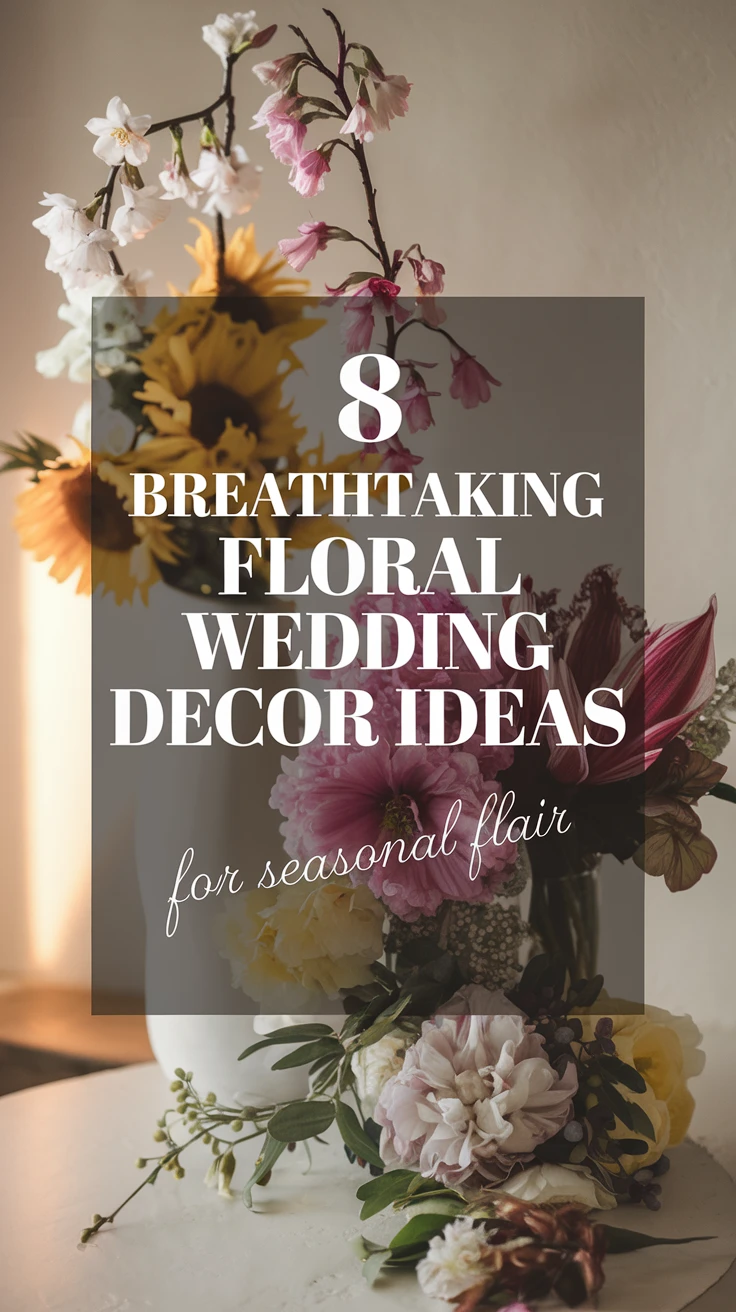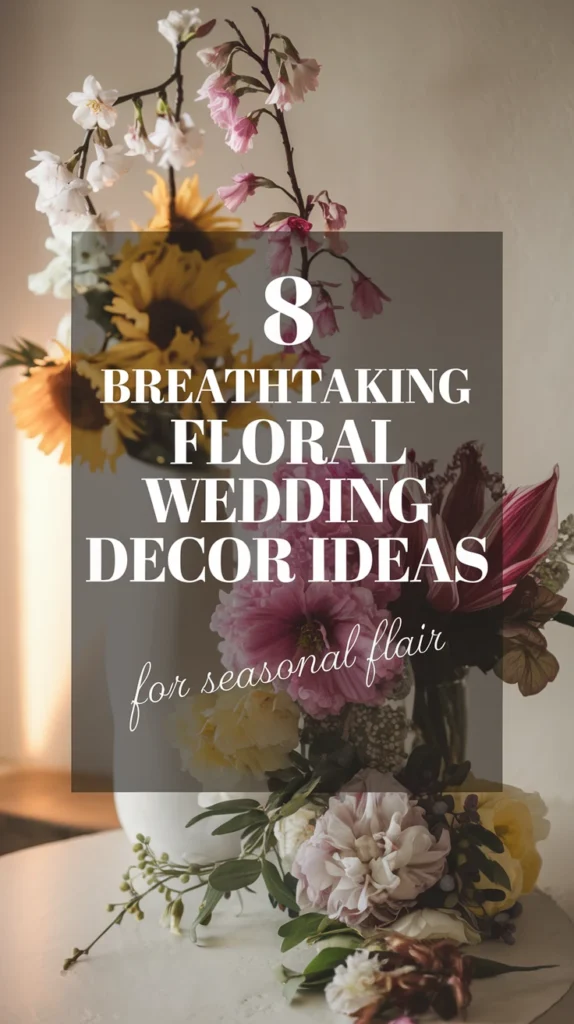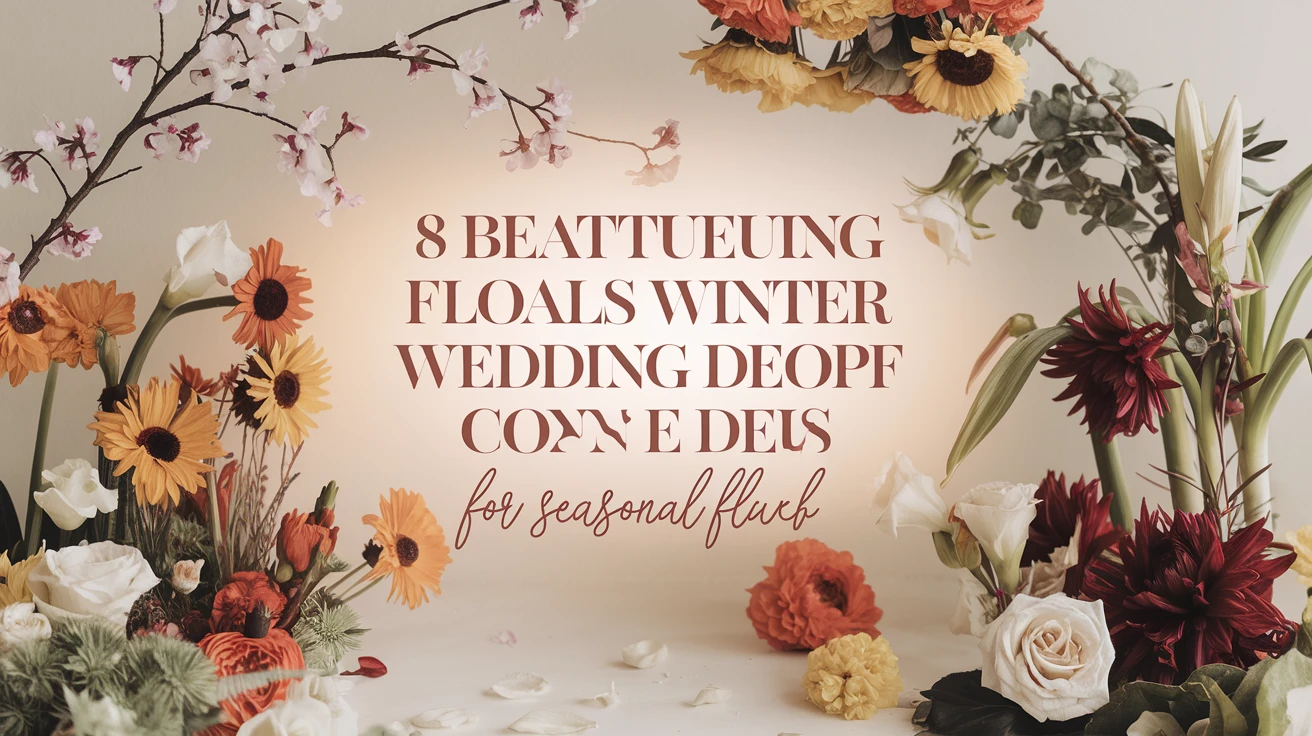
Introduction
When it comes to wedding décor, few elements create as much impact as flower wedding decoration ideas. As a wedding planner who’s orchestrated over 200 ceremonies across all four seasons, I’ve seen firsthand how the right floral arrangements can transform an ordinary venue into a breathtaking celebration space. The magic lies not just in selecting beautiful blooms, but in choosing flowers that complement the season of your special day. Each season offers its own palette of colors, textures, and fragrances that can elevate your wedding aesthetic to new heights. In this guide, I’ll walk you through eight spectacular flower wedding decoration ideas that harness seasonal elements to create unforgettable experiences for you and your guests.
1. Spring Blossoms: Fresh and Vibrant
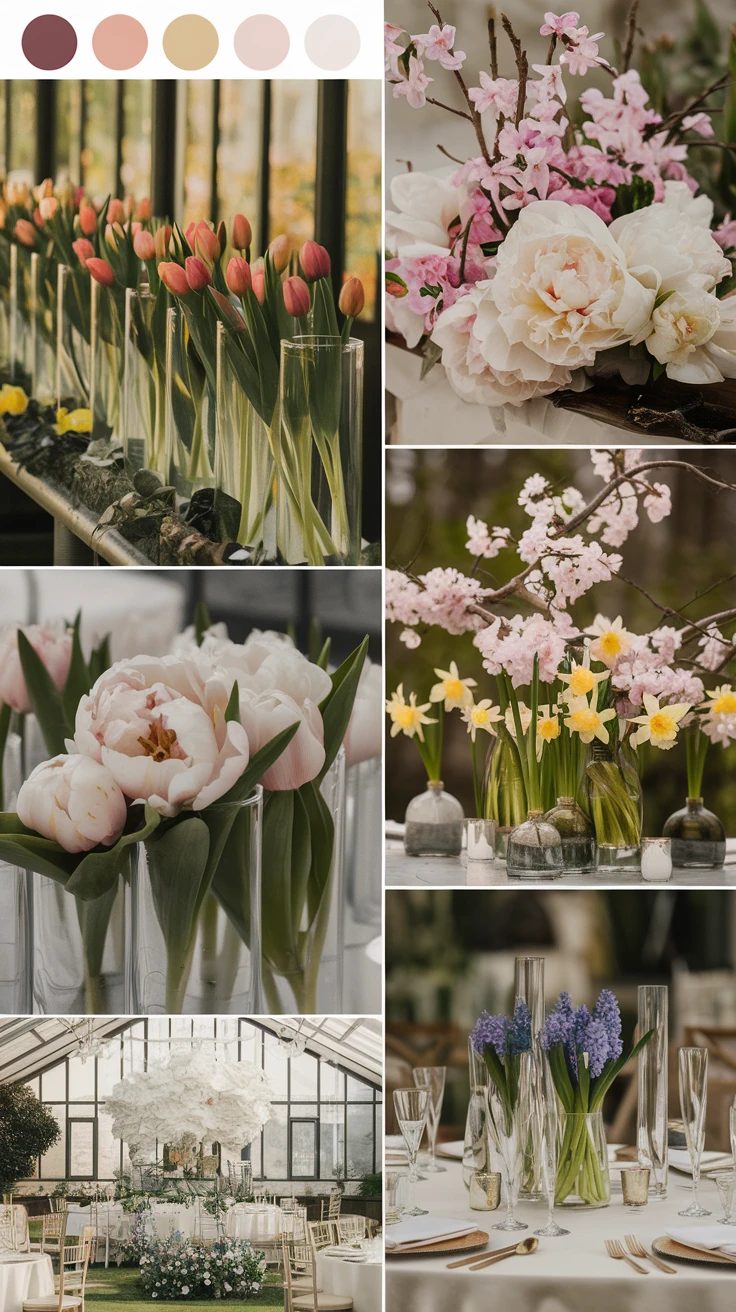
Spring weddings offer an abundance of delicate, fragrant blooms that symbolize new beginnings—perfect for starting your marriage journey. I remember designing a March wedding where we transformed an ordinary ballroom into a veritable garden using primarily in-season flowers.
Spring’s finest floral offerings include:
- Tulips – Available in virtually every color, these versatile blooms work beautifully as aisle markers or in bouquets
- Peonies – These lush, romantic flowers make statement centerpieces and bridal bouquets
- Cherry Blossoms – Incorporate branches for height and dramatic effect in tall arrangements
- Daffodils – Add pops of sunny yellow for cheerful accents
- Hyacinths – Their distinctive fragrance perfumes the air with springtime freshness
For one memorable spring wedding, we created tulip aisle runners by placing small glass cylinders filled with single tulip stems at regular intervals along the pathway. The effect was both elegant and impactful without breaking the budget.
Pro Tip: When working with spring flowers, particularly tulips, keep arrangements away from direct sunlight and fruit displays. Tulips continue to grow after being cut and can “reach” toward light sources, potentially disrupting your carefully designed arrangements.
2. Summer Blooms: Bold and Beautiful
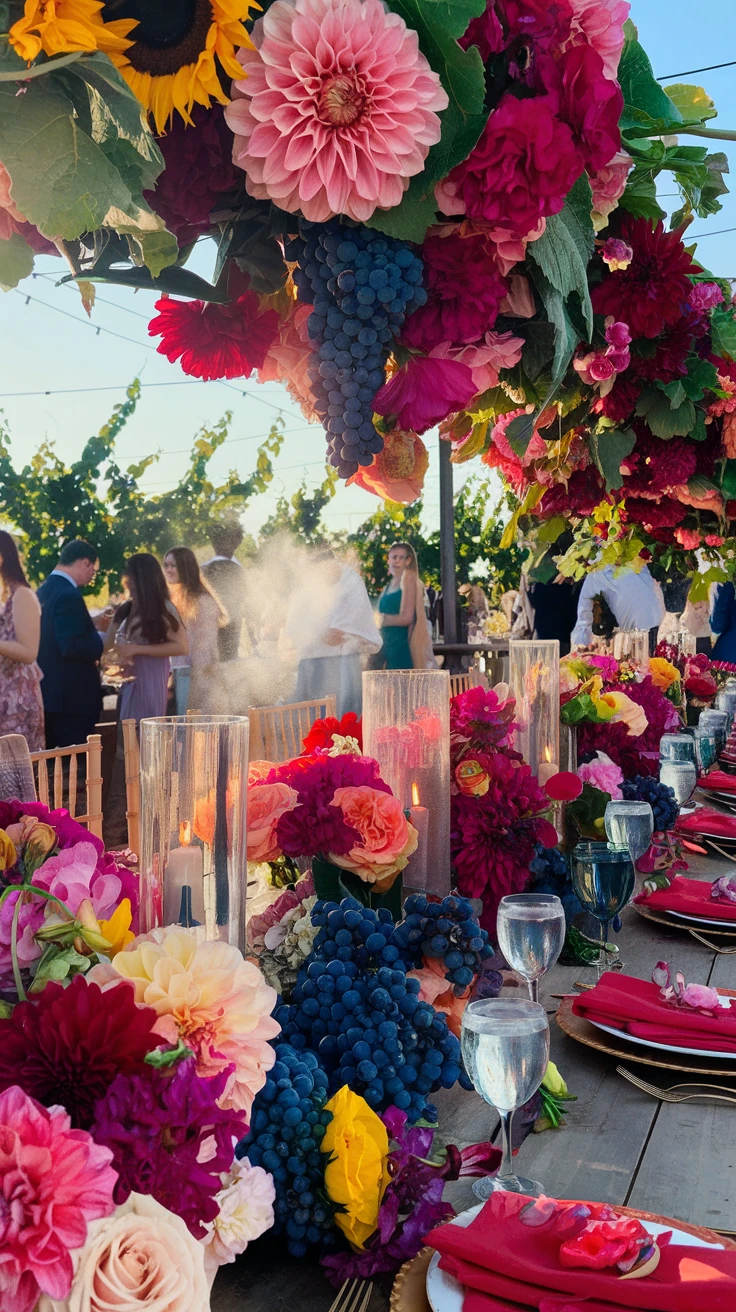
Summer weddings call for vibrant, heat-resistant blooms that won’t wilt under the sunshine. During this abundant season, I love creating dramatic displays that showcase nature’s most colorful offerings.
Summer’s standout wedding flowers include:
- Sunflowers – Perfect for rustic or country-themed celebrations
- Dahlias – These dinner-plate sized blooms make stunning focal points
- Zinnias – Available in every color of the rainbow for versatile designing
- Garden Roses – Lush, fragrant alternatives to standard roses
- Hydrangeas – Create volume in arrangements with fewer stems
One of my favorite flower wedding decoration ideas for summer involves creating “living” table runners. For an outdoor vineyard wedding, we designed continuous garlands of mixed summer blooms running down long farm tables, interspersed with clusters of grapes and votive candles. The effect was both abundant and intimate.
Pro Tip: For outdoor summer weddings, have your florist create arrangements in water-soaked floral foam and mist delicate blooms periodically. I always keep a dedicated “flower rescue team” on standby with water spritzers during particularly hot days.
3. Autumn Accents: Warm and Cozy
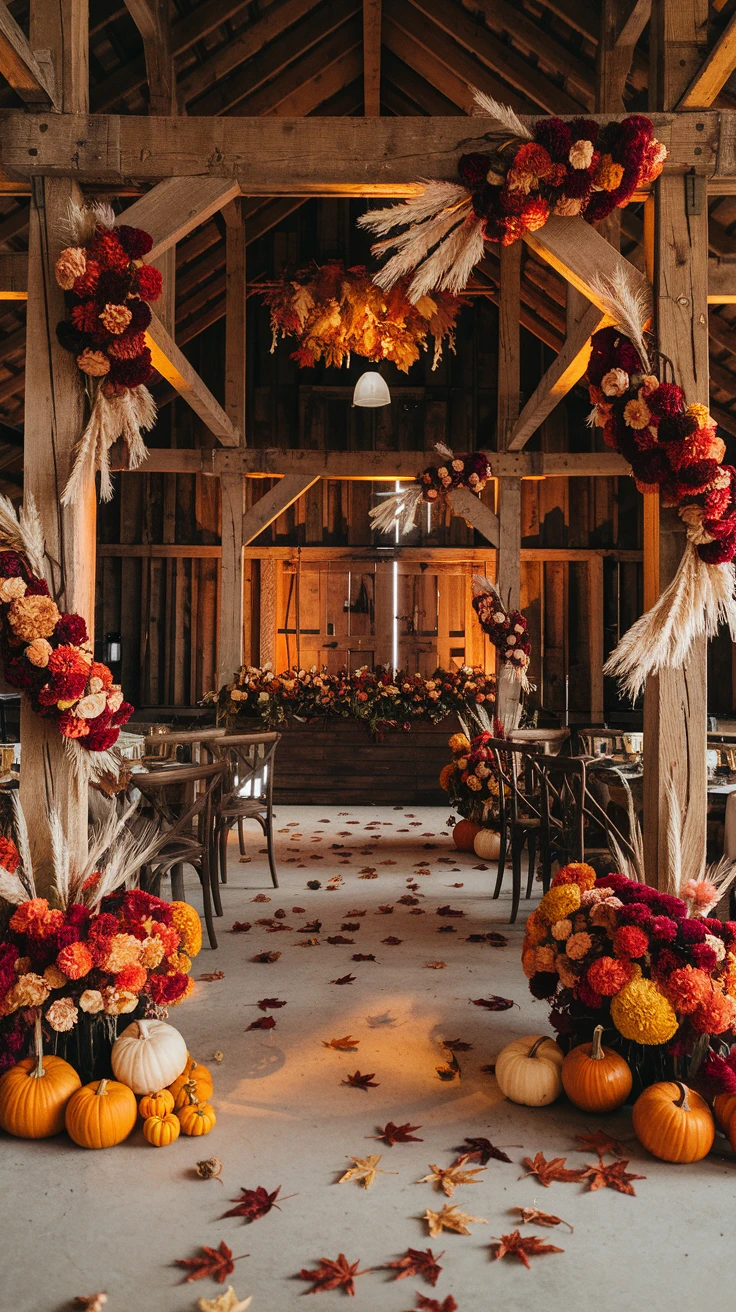
Fall weddings offer a rich tapestry of deep colors and interesting textures. The cooling temperatures allow for longer-lasting arrangements and unique elements that wouldn’t survive summer heat.
Autumn’s most wedding-worthy blooms include:
- Chrysanthemums – Available in rich burgundies, oranges, and yellows
- Dahlias – Peak season continues into early fall
- Celosia – Adds unusual texture and vibrant color
- Marigolds – Bring golden warmth to arrangements
- Chinese Lanterns – Add whimsical structure to fall displays
For an October wedding I planned, we created breathtaking chrysanthemum garlands draped along wooden beams in a converted barn venue. We incorporated mini pumpkins, dried wheat, and scattered maple leaves for an authentic harvest feel that guests still talk about years later.
Pro Tip: Don’t limit yourself to just flowers in autumn arrangements. Incorporating seasonal elements like dried grasses, berries, crab apples, and even ornamental vegetables like kale can create dimension and interest without increasing your floral budget.
4. Winter Wonders: Elegant and Sophisticated
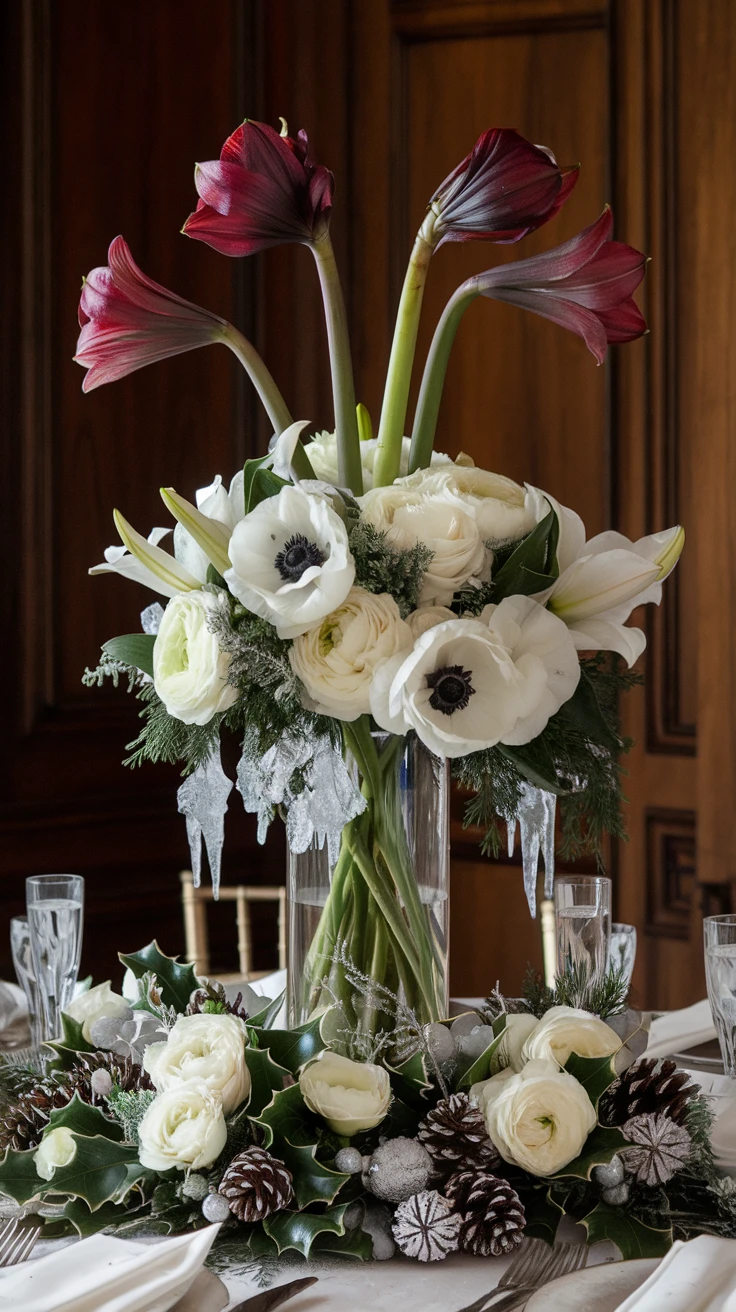
Winter weddings call for sophisticated, hardy blooms that convey elegance against potentially stark backgrounds. The season’s more limited flower selection actually creates opportunities for truly distinctive designs.
Winter’s wedding flower stars include:
- Amaryllis – Dramatic, tall blooms perfect for statement pieces
- White Lilies – Classic elegance that brightens dark winter days
- Anemones – Graphic black centers provide dramatic contrast
- Ranunculus – Delicate, rose-like blooms available in winter
- Hellebores – Subtle, sophisticated flowers also called “winter roses”
For a January wedding at a historic mansion, we created a winter wonderland using primarily white lilies, silver-sprayed eucalyptus, and strategically placed pine cones dipped in silver leaf. The arrangements looked like they’d been touched by frost and complemented the venue’s historic character beautifully.
Pro Tip: Winter weddings offer the perfect opportunity to incorporate non-floral elements like evergreen boughs, holly berries, and even crystal or glass accents. These elements extend your budget and create seasonal authenticity that pure flower arrangements can’t match.
5. Seasonal Centerpieces: A Touch of Nature
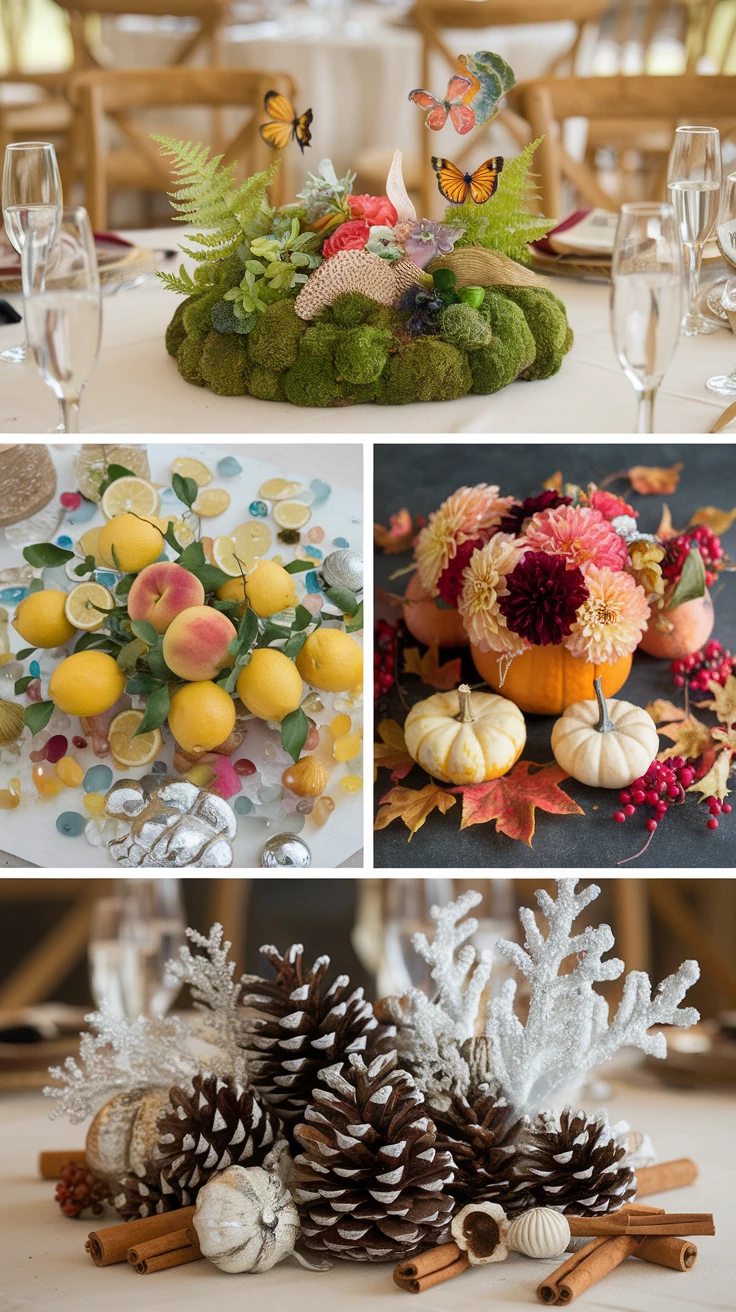
Regardless of season, centerpieces remain the most impactful flower wedding decoration ideas for reception spaces. I always recommend incorporating seasonal elements beyond just flowers to create truly memorable tablescapes.
Seasonal centerpiece enhancements include:
- Spring: Moss bases, butterfly accents, and delicate ferns
- Summer: Fresh fruits like lemons or peaches, sea glass, or shells
- Fall: Mini pumpkins, colored leaves, and autumn berries
- Winter: Pinecones, cinnamon sticks, and silver-sprayed branches
One of my most photographed centerpiece designs involved autumn arrangements where we hollowed out small pumpkins to use as natural vases. We filled them with dahlias, berries, and trailing ivy for an organic look that perfectly captured the season.
Pro Tip: Consider your guests’ experience when designing centerpieces. Tall arrangements should be elevated enough for conversation underneath, while low arrangements should remain under 12 inches to avoid blocking sightlines. I once made the mistake of creating gorgeous but conversation-blocking centerpieces—a lesson I’ll never forget!
6. Floral Arches: Grand Entrances

Ceremony arches create focal points that frame one of life’s most significant moments. Designing seasonally appropriate arches ensures they complement both your venue and the natural environment.
Seasonal arch ideas include:
- Spring: Dogwood branches with clusters of tulips and daffodils
- Summer: Asymmetrical designs with garden roses and trailing jasmine
- Fall: Maple branches with dahlias and Chinese lanterns
- Winter: Evergreen bases with white amaryllis and silver eucalyptus
For a memorable spring wedding, we created a cherry blossom arch by forcing branches to bloom early in a greenhouse. We supplemented with pink and white peonies for a dreamy, ethereal effect that perfectly framed the couple’s vows.
Pro Tip: Always consider the arch’s “second life” after the ceremony. Well-designed arches can be partially disassembled and repurposed as reception décor, maximizing your floral budget. I typically plan for the arch flowers to later accent the sweetheart table or cake display.
7. Hanging Gardens: Overhead Elegance
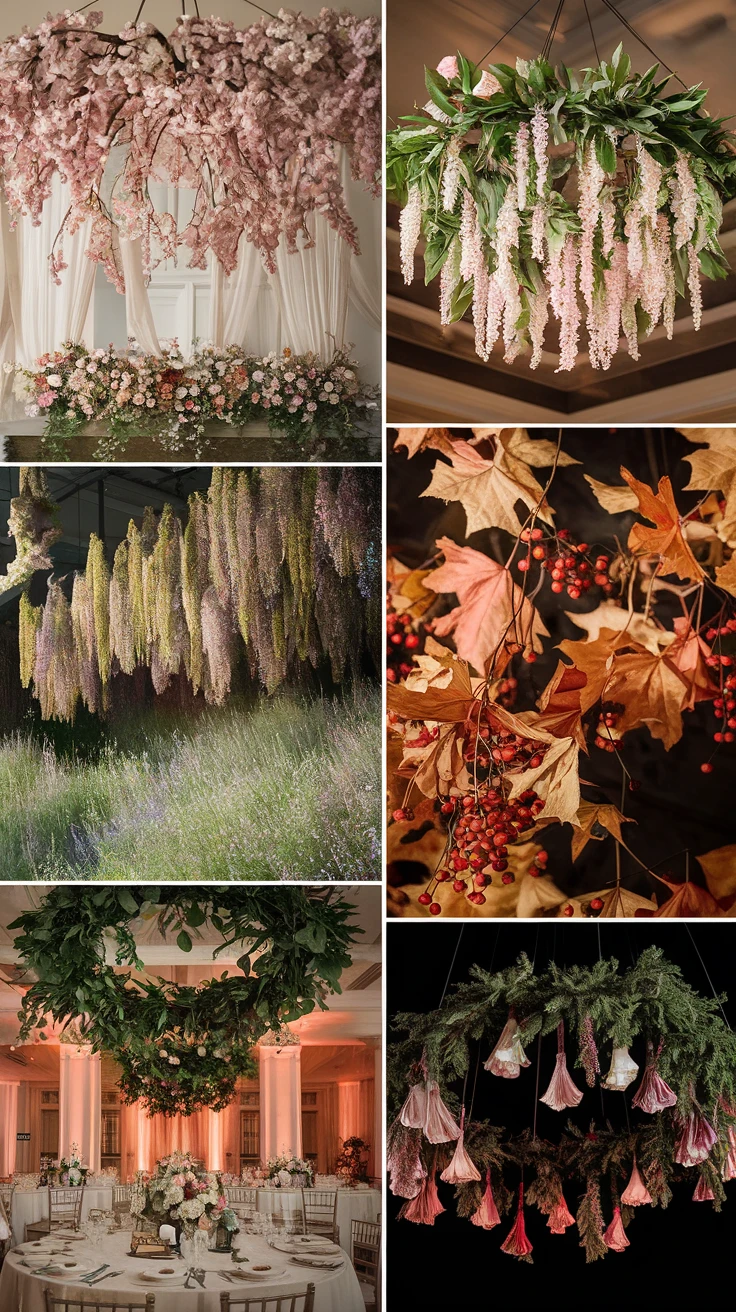
Suspended floral installations create magical environments by utilizing often-overlooked vertical space. These dramatic elements draw the eye upward and transform ordinary venues into extraordinary experiences.
Seasonal hanging installation ideas include:
- Spring: Wisteria and cherry blossom chandeliers
- Summer: Suspended meadows with wildflowers and grasses
- Fall: Hanging installations with amber maple leaves and berries
- Winter: Suspended evergreen rings with amaryllis blooms
For one unforgettable summer wedding, we created a “floating garden” above the dance floor using chicken wire forms filled with hydrangeas, garden roses, and trailing ivy. The installation appeared to float magically above guests as they danced beneath what felt like an enchanted garden.
Pro Tip: Always discuss hanging installations thoroughly with your venue. Weight restrictions, attachment points, and installation/removal timing must be carefully coordinated. I always build in extra setup time for these complex features and have a contingency plan if structural limitations are discovered during installation.
8. Pro Tips for Perfect Flower Decor
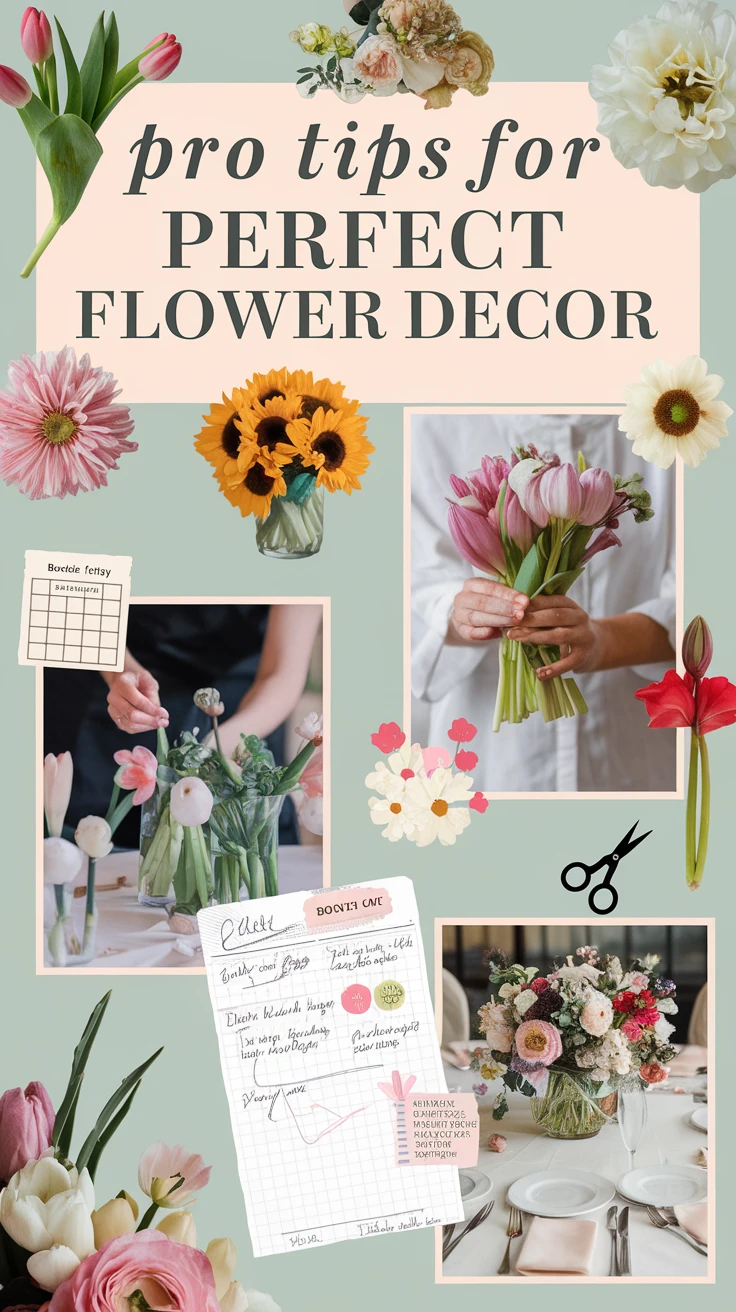
After years of creating floral magic for weddings in every season, I’ve gathered invaluable insights that help ensure floral success regardless of your chosen blooms:
- Book early – Secure your preferred florist 6-9 months before your wedding
- Be flexible – Have “must-have” flowers but allow substitutions for supporting blooms
- Consider fragrance – Some beautiful flowers like lilies have overwhelming scents
- Think about allergies – Both yours and your guests’
- Plan for preservation – Discuss which elements can be dried or preserved after the event
Pro Tip: Always allocate 10-15% of your total wedding budget for flowers. While it might seem tempting to cut floral costs, flowers appear in virtually every wedding photo and create the atmosphere that guests remember long after the event. I’ve never had a client regret investing in quality floral design, but I’ve consoled many who wished they’d allocated more to this crucial element.
Frequently Asked Questions
What are the best flowers for a summer wedding?
The best summer wedding flowers include heat-resistant varieties like zinnias, sunflowers, dahlias, garden roses, and hydrangeas. These blooms maintain their appearance even in warmer temperatures and offer vibrant color options. For outdoor summer weddings, consider hardy blooms like succulents and tropical flowers that won’t wilt quickly in heat.
How can I incorporate seasonal elements into my wedding decor?
Beyond flowers, incorporate fruits (citrus in summer, apples in fall), seasonal foliage (ferns in spring, colored leaves in autumn), and appropriate textures (light and airy for spring/summer, rich and dense for fall/winter). Work with a florist familiar with your wedding location to identify locally available seasonal elements that will enhance your floral designs authentically.
What are some budget-friendly flower decoration ideas?
Choose in-season, locally grown flowers to reduce costs. Use greenery like eucalyptus or ferns to add volume with fewer blooms. Repurpose ceremony flowers at the reception (move altar arrangements to the buffet table, for example). Focus on impactful areas like the ceremony backdrop and entrance rather than decorating every corner. Consider non-floral elements like candles, which create atmosphere without the cost of fresh flowers.
How do I keep flowers fresh throughout the wedding day?
Request that your florist deliver arrangements as close to the event start time as possible. Keep arrangements out of direct sunlight and away from heating vents. Have your coordinator periodically mist delicate blooms with water. For outdoor summer weddings, consider hardy varieties and keep backup blooms in water for last-minute replacements. Store personal flowers like bouquets and boutonnieres in the refrigerator (not the freezer) until needed.
Can I use artificial flowers for a seasonal theme?
High-quality silk or preserved flowers can work beautifully for seasonal themes, especially for elements that might be handled frequently or need to last all day. Consider a mix of fresh and artificial—perhaps fresh flowers for centerpieces and ceremony décor, with quality silk flowers for bouquets and boutonnieres. Modern preserved flowers, like those treated with glycerin or freeze-dried, offer the beauty of real flowers with extended longevity.
